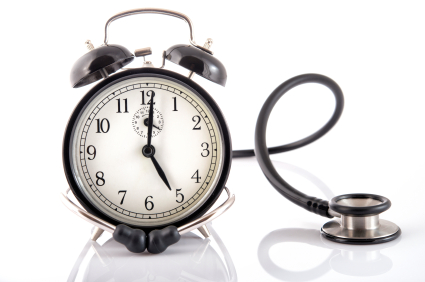 This week, I’d like to discuss a serious acoustical challenge in hospital settings: medical device alarms.
This week, I’d like to discuss a serious acoustical challenge in hospital settings: medical device alarms.
You've undoubtedly experienced the never-ending stream of beeping and pinging in these environments – a bombardment that’s caused ‘alarm fatigue’ in many staff members. Essentially, they’re continually exposed to disruptive noise and have become desensitized to the urgency of these types of sounds.
This effect prompted Johns Hopkins Hospital to study and reduce ineffective alarms and their negative consequences – a project for which they've earned a 2012 ECRI Institute Health Devices Achievement Award.
The research team describes its goals, methods and results in Using Data to Drive Alarm Improvement Efforts.
In summary, they showed that medical devices are set up to be ‘overly sensitive.’ Though this is done for a reason – to ensure that no real alarm event is missed – it results in too many false alarms. How many? Astoundingly, they found an average of 350 alarms per bed per day! The noisiest ICU areas experienced as many as 771 per bed per day. And although the study didn't allow them to quantify exactly how many of these were false alarms, they concluded that a high percentage were unnecessary. For instance, they found 90% of 157 sleep apnea alarms to be false.
The team also showed that, in many cases, audible alarms are just nuisances and not medically beneficial. Visual indicators would suffice for lower-priority or advisory alarms.
Over a period of ten months, they worked diligently with staff in six individual hospital units to lower the incidence of alarms by between 24 and 74%. As a result, there’s not only less noise, but better alarm response. In the absence of so many false or low-priority alarms, staff members are more aware of true alarms and respond more quickly. The hospital reports that, despite the reduction in alarms, they haven’t had a single medical event fail to trigger an appropriate alarm.
This type of action is exactly what I've got in mind when I suggest that unnecessary noise be reduced at the source. In earlier posts about the ABC Rule, I emphasized the importance of this strategy to creating an effective acoustic environment.
The Johns Hopkins study also addresses the need for a combined approach to acoustical design when it mentions that part of the challenge of hearing alarms is the presence of closed doors to private patient rooms. Of course, these doors are likely closed to help prevent the noise from other rooms and corridors from entering the patient’s space. Reducing the noise from alarms may allow the doors to be left open more often.
Adding sound masking to the design would further support an open door policy. Indeed, the use of this technology in hospital patient rooms is rapidly growing in popularity as a way to lessen the impact of noise and provide more effective recuperative environments.
Cheers,
Niklas
Related Articles